Art History: Abbott Thayer
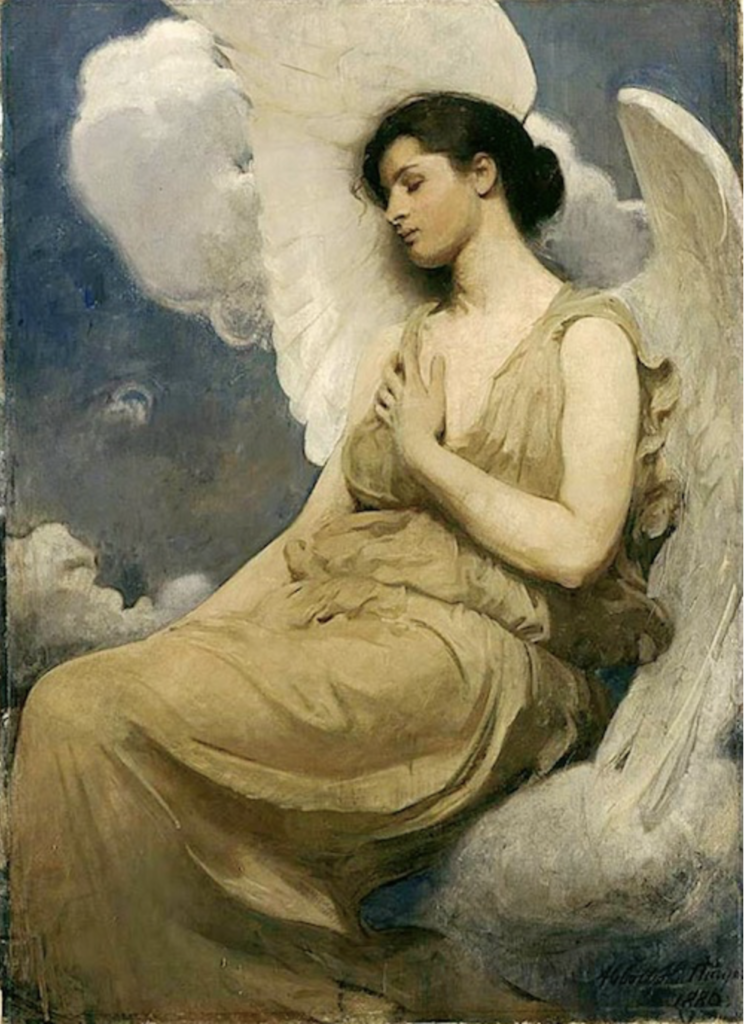
Abbott Henderson Thayer has been one of my favorite artists since the day I started studying painting and art history. Who is not moved by his incredible winged creatures – the angels of American art? Very few artists are able to pull off such a romanticized subject so honestly, so authentically as he did. He was an amazing still life painter and landscape painter as well. Surprising to me was the fact that he also is referred to as the “father of camouflage”. Though he didn’t actually invent it, he wrote about disruptive patterning and masquerade and actually presented it to the American Military and the British Military. He was made fun of by Theodore Roosevelt and this affected his mental well being greatly.
Born in 1849 in Boston, he grew up in Keene, New Hampshire. He started his art career at the young age of 15, studying birds and other wildlife. He was, in his words, bird crazy! By the time he was 18, he was off to study painting at the Brooklyn Art School and the National Academy of Design in NYC. He then spent some time overseas in France studying four years at the Ecole des Beaux-Arts and returned to New York.
To say Thayer was eclectic is an understatement. His first wife was Kate Bloede and they had five children. The couple lost two small children one year apart and his wife was never mentally the same. She was eventually sent to an asylum for severe depression and Thayer was left to take care of the kids. His second wife was his long time friend and caretake Emmeline Buckinghan Beach. Emma and Thayer relocated to Dublin, NH where he grew up and they resided there the rest of their lives.
Abbott Thayer had horrible mood swings that he named the Abbott Pendulum. Today he would be diagnosed with Bipolar Disorder. His condition grew worse as he grew older. He would work feverishly and passionately during his manic times, usually three days, and then go into great depressions and self hatred during his down times. He would start paintings in these three days and then have his students replicate the same paintings until he could resume his life again and start anew. He suffered from panic attacks and hypochondria to the point of suicidal thoughts, eventually seeking help at an asylum.
In his later years, Thayer focused his work on Monadnock, NH landscapes. “ Thayer constantly prowled Monadnock and its “…virgin forest where time alone has left his traces, where his mark is on every stage of growth, from moss-covered soil through tiny saplings to the perfect tree to the solemn skeleton that faces a few winters’ storms before crashing down to lie still at last and begin the gentle change through all the beautiful mossy stages back to mother earth.”
“Thayer never went to church, believing that formal religion smacked of “hypocrisy and narrowness.” Central to his work was Emersonian Transcendentalism, which taught that God permeates nature. He settled in Dublin in part because of “the wild grandeur” of Monadnock which to him loomed up like a sacred totem, “a natural cloister” – and he painted it as such. Art for him was “a no-man’s land of immortal beauty where every step leads to God.”
His artistic mission was “unsullied purity; spiritual truth” – pictures of “highest human soul beauty.” This crystallized in 1887 in a winged portrait of his 11-year-old Mary, painted during a summer in Keene. Virginal girls with wings became a theme of sorts. To him they were the “infinite beauty of angelic women.” But not angels per se. Daughter Gladys said that her father added wings to his beautiful subjects to make each “a creature of all time.” – MONADNOCK ART: FRIENDS OF THE DUBLIN ART COLONY.
Biography
By Richard S. Meryman, Jr.
Copyright © 2006 by Richard S. Meryman, Jr. This article is adapted from a talk by Richard S. Meryman, Jr. at the Dublin Public Library on June 21, 2006, under the auspices of the Friends of the Library.
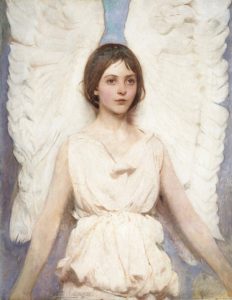
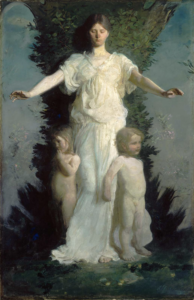
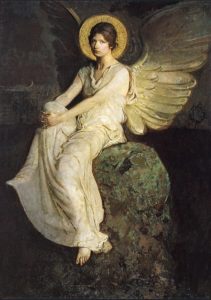

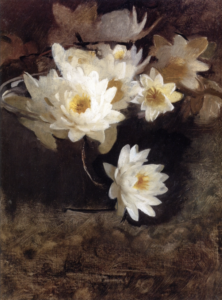
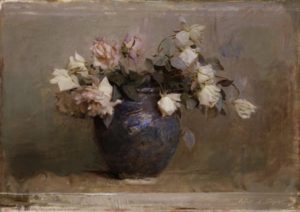
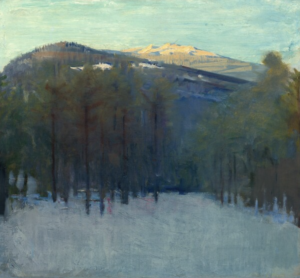

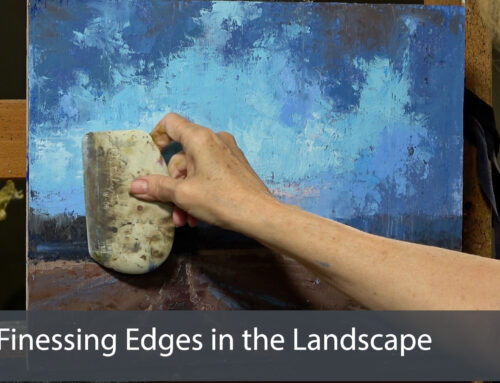

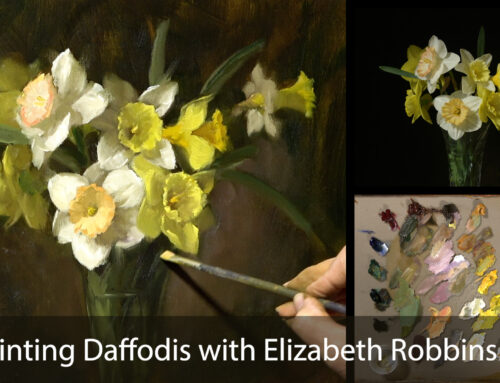
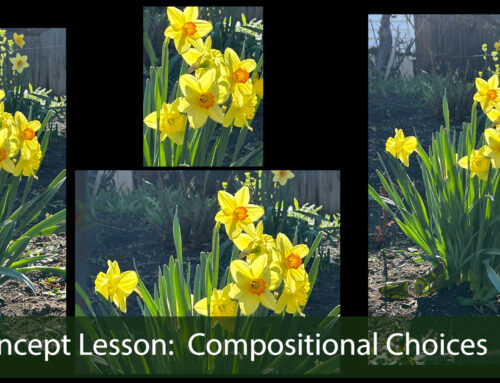

Been aware of Thayer’s works for years and it was very interesting to learn his backstory. I enjoyed this, thank you so much for posting this Shanna.
Thank you Shanna. Very interesting. Beauty for ashes.
Never aware of his illness. The rose painting has always been one of my favorite paintings. Enjoyed learning more about him. Thanks.
I wasn’t aware of it either until I did this lesson. I have always been such an admirer of his work!